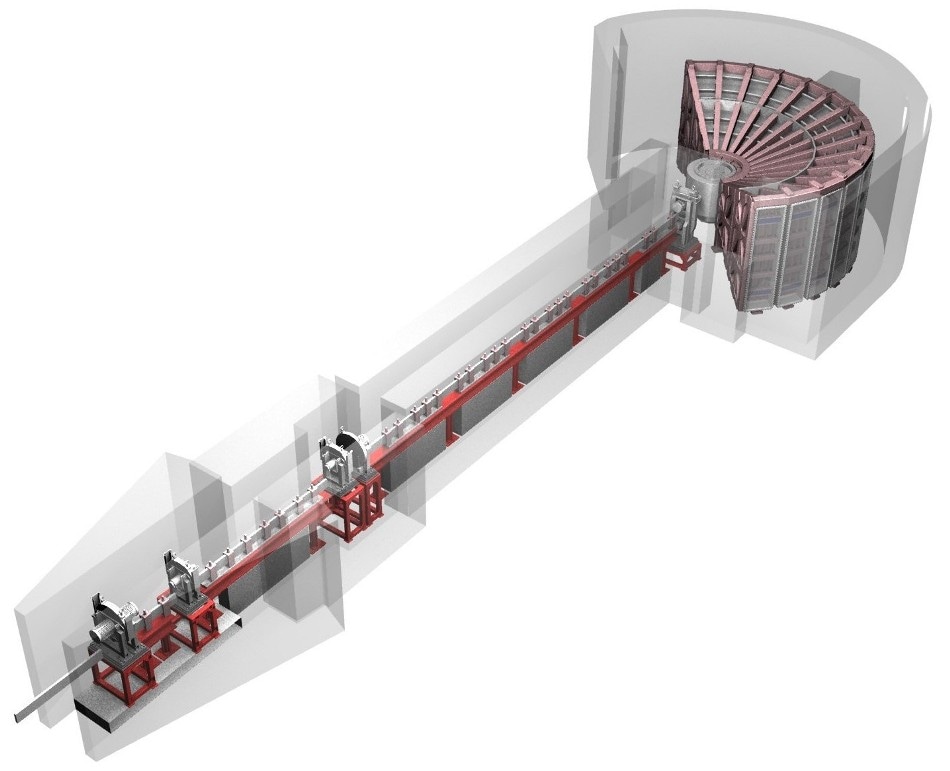Jun 27 2019
A team of scientists from Tohoku University, J-PARC, and Tokyo Institute of Technology conducted a comprehensive study of magnetic quasiparticles known as “triplons”. The scientists performed the research with a low-dimensional quantum magnet, Ba2CuSi2O6Cl2, using neutron inelastic scattering by AMATERAS at J-PARC. Their findings paved the way to the discovery of a new "topologically protected triplon edge state" in the said compound.
 Neutron inelastic scattering spectrometer AMATERAS installed at MLF, J-PARC. ©J-PARC(KEK/JAEA)
Neutron inelastic scattering spectrometer AMATERAS installed at MLF, J-PARC. ©J-PARC(KEK/JAEA)
The theoretical discovery of a topological insulator produces interest from a fundamental and technological perspective. The research revealed that a non-dissipative electron flow, also known as an "edge-state," can be expected to appear on the surface of topological insulators because of the difference in topological characteristics between the outside and inside of the topological insulator.
Remarkable efforts have been taken to attain the topological edge state in real 3D and 2D electronic materials since this non-dissipative flow has the prospect of being utilized for energy-efficient information transmission and processing in the future.
The edge-state concept applies to electrons, as well as quasiparticles, which transport spin current in materials, evolving from electron spin fluctuations such as triplons and magnons. However, so far, only few examples have proven bosonic quasiparticles with topological characters.
The researchers used neutron inelastic scattering by AMATERAS at J-PARC to exactly establish the dispersion relations of triplons in the quantum magnet Ba2CuSi2O6Cl2. The observed dispersion relations fix limits in the model Hamiltonian, which indeed, reveal that the compound is a new awareness of the Su-Schriffer-Heeger (SSH) model — the most essential model to establish topological insulators. The SSH model is well-known for being equivalent to a single spin under a fictitious magnetic field.
As the quasiparticle travels from left to right, a fictitious magnetic field makes a single rotation. Concurrently, quasiparticle phases rotate half, resulting in a nontrivial topology. This nontrivial topology of triplons specifies that edge states exist in the middle of the energy gap of Ba2CuSi2O6Cl2. The observation of topological triplons should speed up the detection of thermodynamic and magnetic properties of edge states, and may make way for further progress of energy efficient information transmission and processing materials.